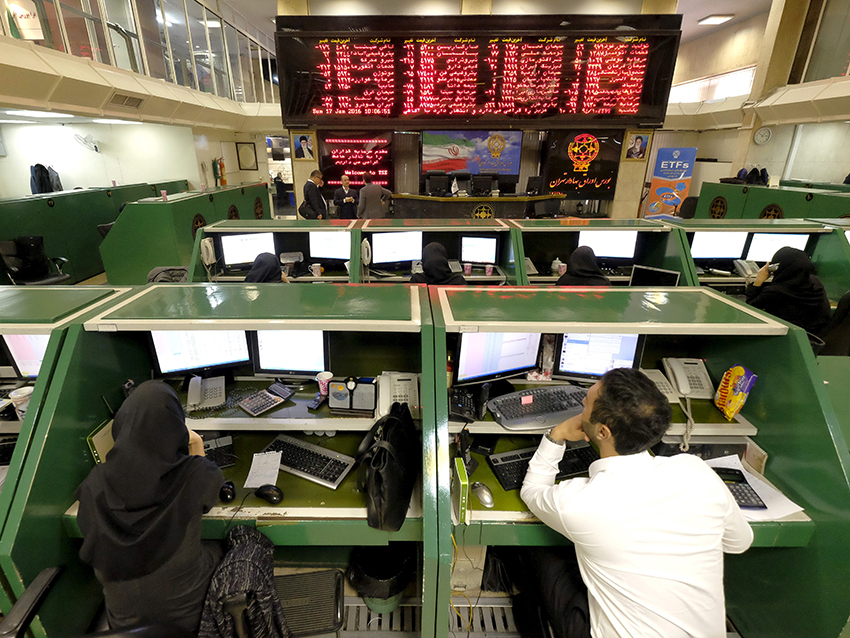Although investing in Iranian funds is broadly prohibited for US investors, for Europeans, it can be done—within limits—following the lifting on Jan. 16 of nuclear-related sanctions imposed on Iran by an international coalition.
And the strong showing of Iranian moderates in national elections last month may encourage further interest in the country.
Iran has a large, diversified economy and a stock market, and there are new funds that allow some global investors to put their money there, reads an article in The Wall Street Journal.
However, American individuals and entities are still prohibited from nearly all dealings with Iran, with limited exceptions such as the export of food and medicine to the country. That’s because of US sanctions still in place.
European investors have a much freer hand, but they need to be wary of some remaining European Union sanctions. In addition, even people who are not American citizens or living in the US are subject to certain remaining US sanctions—for example, prohibitions against dealings with designated Iranian individuals and entities.
A New Fund
In anticipation of greater international interest in Iranian stocks, the Turquoise Variable Capital Investment Fund was launched in December. Jointly managed by Turquoise Partners, an Iranian financial group, and London-based Charlemagne Capital, the open-ended fund invests predominantly in Iranian stocks, and is aimed at all non-US investors.
It has about $55 million in assets and its holdings include some locally listed corporate bonds, but its long-term goal is to hold only equities.
“Most of the money in the fund was transferred from a similar fund that Turquoise Partners ran on its own for 10 years. There has not been enough time since the lifting of the nuclear-related sanctions for the fund to see significant inflows in reaction,” says Dominic Bokor-Ingram, Charlemagne Capital’s portfolio adviser for frontier markets.
Bokor-Ingram noted that Iran’s established stock exchange gives it an advantage over other frontier markets for investors.
“If you look at the biggest frontier, emerging-market opportunities right now that people quote—Cuba, Ethiopia, Myanmar—the difference in Iran is that you have a big, functioning stock market and a very big economy of approximately $400 billion,” he said.
Iran’s Increasing Wealth
The portfolio adviser noted that the fund is seeking to tap into Iran’s consumer market, with sectors like banking, telecommunications, healthcare, housing and e-commerce prominent among its holdings—“anything that’s geared to that domestic economy and the increasing wealth of the population.”
Bokor-Ingram said there is “almost zero foreign investment” in Iranian stocks. But he says there has been an increase in expressions of interest in the new fund from potential investors and he expects investment in the fund to pick up in the coming months.
Turquoise Partners’ CEO Ramin Rabii said that over the past 18 months, he has hosted more than 150 delegations of foreign investors, ranging in size from two or three people and up to 30 or 40.
Most of these were from European countries, he said, though there were others from countries in the region such as Turkey and the UAE.
Turquoise also runs an exchange-traded fund, the Turquoise TSE 30 Iran Index ETF, which tracks the 30 largest companies on Tehran Stock Exchange. It is targeted at small, individual investors, Rabii says, and has seen interest from investors in the region, as well as some in East Asia and Russia. It has assets of about $3 million.
Rabii says Iran is similar to Turkey in a number of ways, such as population size, but that while foreign investors are major players in Turkish stocks, “in Iran it’s less than half a percent. That just shows you the potential of foreign investment that can come to Iran.”
But much has to change before Iran can reach that potential. For instance, Rabii notes, many Iranian companies publish their financial statements only in Persian.
Still, other funds are testing the waters, too.
London-based Sturgeon Capital, in a partnership with Iranian brokerage firm Mofid Securities, launched a hedge fund in December that invests in companies listed in Iran, though it could broaden its portfolio to include the shares of companies outside the country that do business there. It currently has less than $10 million in assets.
Sturgeon Capital’s CEO, Clemente Cappello, said he aims to target Iranian companies that have the potential to export to the company’s middle-income neighbors—such as Turkmenistan and Iraq—and highlights the glassmaking sector as having strong potential in this regard.
Cappello says he does not expect a rush of investment in the fund soon. And on a broader scale he expects many banks to remain cautious for the foreseeable future about handling the transfer of investors’ money into and out of Iran.
That point is echoed by Daniel Martin, a partner at Holman Fenwick Willan, a London law firm with a focus on international commerce.
“I think anyone who is looking to persuade a bank or financial institution to make a payment into Iran or receive payment out of Iran is finding it difficult at the moment to identify financial institutions that will support those transactions,” he said.
In a recent note, Renaissance Capital’s head of equity strategy, Daniel Salter, pointed to a number of challenges in the Iranian market, including a lack of updated economic statistics, and a trading week that runs from Saturday to Wednesday.


